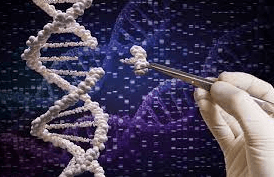
In the realm of cutting-edge medical technology, CRISPR (Clustered Regularly Interspaced Short Palindromic Repeats) stands out as a revolutionary tool, promising a transformative journey into the future of healthcare. In this blog we will discuss about CRISPR: Unleashing the Power of Genetic Editing for a Healthier Future. In this blog we will discuss about CRISPR: Unleashing Power of Genetic Editing for a Healthier Future.
This groundbreaking genetic editing technology has captivated scientists and the public, offering unprecedented opportunities to address genetic disorders, enhance agricultural practices, and potentially eradicate certain diseases. Let’s delve into the world of CRISPR, exploring its mechanisms, applications, and ethical considerations surrounding this genomic innovation.
Understanding CRISPR: Nature’s Genetic Toolkit
CRISPR technology is inspired by the natural defense mechanisms of bacteria and archaea, which use RNA-derived sequences to fend off attacks by viruses and other foreign bodies. Researchers harness this system in the laboratory to precisely modify genes for various purposes.
The CRISPR system consists of two main components: the Cas9 protein, which acts as a pair of molecular scissors, and a guide RNA (gRNA), which directs the Cas9 to the specific DNA sequence to be modified. All read about CRISPR: Unleashing Power of Genetic Editing for a Healthier Future.
Precision Engineering: How CRISPR Works
The power of CRISPR lies in its ability to edit the genetic code precisely. Once the Cas9 reaches its destination, it induces a cut in the DNA. The cell’s natural repair machinery then kicks in, attempting to fix the amount. Researchers leverage this repair process to introduce desired changes by adding, deleting, or replacing genetic material.
Applications of CRISPR: A Multifaceted Tool
Genetic Medicine: Treating Genetic Disorders
CRISPR holds immense promise for treating genetic disorders by correcting the underlying genetic mutations responsible for conditions such as cystic fibrosis, sickle cell anemia, and muscular dystrophy. Clinical trials and research initiatives are exploring the therapeutic potential of CRISPR in correcting disease-causing mutations at the genetic level.
Agricultural Advancements: Enhancing Crop Resilience
CRISPR’s precision is not limited to the realm of medicine. In agriculture, researchers use CRISPR to develop crops with enhanced resistance to pests, improved nutritional content, and increased tolerance to environmental stressors. This has the potential to revolutionize global food production and address challenges related to climate change and population growth.
Infectious Disease Control: Battling Pathogens
CRISPR technology can be programmed to target and eliminate specific viruses or bacteria. This opens up new possibilities in the fight against infectious diseases. Researchers are exploring CRISPR-based strategies to combat viral infections, including those caused by HIV and influenza.
Biological Research: Probing the Mysteries of Life
CRISPR’s versatility makes it an invaluable tool for basic biological research. Scientists use it to study gene function, unravel cellular pathways, and gain insights into the fundamental processes of life. CRISPR has accelerated the pace of biological discoveries, enabling researchers to explore previously inaccessible areas of genetic inquiry.
Ethical Considerations: Navigating the CRISPR Landscape
While CRISPR’s potential is undeniably exciting, its applications raise critical ethical considerations. Ethical discussions are ongoing, emphasizing the importance of responsible use, transparency, and public engagement in guiding the development and application of CRISPR technology.
The Future of CRISPR: Charting New Frontiers
As CRISPR continues to evolve, the possibilities for its application seem boundless. The field of regenerative medicine envisions using CRISPR to repair damaged tissues and organs, offering hope for patients with degenerative conditions. Additionally, efforts are underway to refine and enhance CRISPR’s precision, minimizing off-target effects and increasing its therapeutic potential.
Read More: Best Social Media Marketing Services for Small Business
Conclusion:
In conclusion, CRISPR represents a transformative force in the scientific and medical landscapes, offering a powerful tool to rewrite the code of life. CRISPR’s impact is far-reaching, from addressing genetic disorders to revolutionizing agriculture and battling infectious diseases. However, responsible and ethical use is paramount as we navigate the uncharted territories of gene editing. As researchers, ethicists, and policymakers collaborate, CRISPR holds the promise of ushering in a new era of precision medicine and a healthier future for generations to come. Thanks for reading our Blog About CRISPR: Unleashing the Power of Genetic Editing for a Healthier Future. Thaks for reading our blog about CRISPR: Unleashing Power of Genetic Editing for a Healthier Future.
